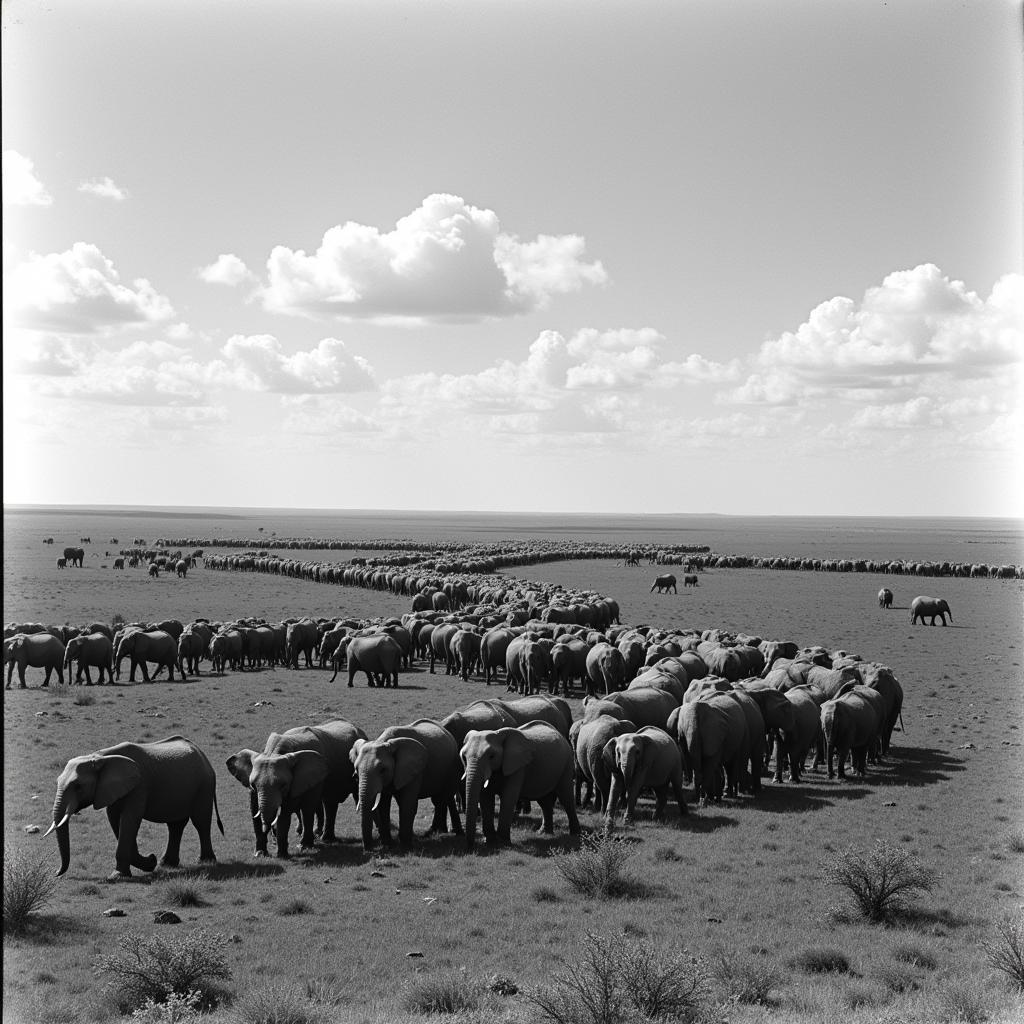The year is 1950. World War II has just ended, and a new era of peace and prosperity is dawning. Yet, amidst this global transformation, a silent crisis brews in the heart of Africa. The continent’s elephant population, once teeming with millions, has dwindled to a fraction of its former glory. So, just how many African elephants were there in 1950? While accurate figures are difficult to pin down, estimates suggest a population hovering around 5 million. To truly grasp the magnitude of this number, we need to journey back in time and understand the complex factors that shaped the fate of these majestic creatures.
 Vast African Elephant Herd Roaming the Savannah in the 1950s
Vast African Elephant Herd Roaming the Savannah in the 1950s
The Decline Begins: Unveiling the Factors
The decline of the African elephant population in the 20th century can be attributed to a confluence of factors, each playing a significant role in shaping this unfortunate narrative:
-
Habitat Loss: As human populations grew, so did the need for land. Vast swathes of elephant habitat were converted into farmland, settlements, and infrastructure, leading to habitat fragmentation and degradation.
-
Poaching: The insatiable demand for ivory, particularly in the West, fueled a surge in poaching that decimated elephant populations across the continent. Elephants were ruthlessly hunted for their tusks, leaving behind a trail of devastation.
-
Human-Elephant Conflict: As humans and elephants competed for increasingly scarce resources, conflicts arose. Crop raiding, infrastructure damage, and occasional human fatalities led to retaliatory killings, further impacting elephant numbers.
A Glimmer of Hope: Conservation Efforts Take Root
The plight of the African elephant did not go unnoticed. By the mid-20th century, conservationists and governments began to recognize the urgency of the situation. Efforts were made to protect remaining populations and curb the illegal ivory trade:
-
Establishment of National Parks and Reserves: Protected areas, such as national parks and game reserves, were established across Africa to safeguard elephant populations and their habitats.
-
International Trade Bans: The Convention on International Trade in Endangered Species of Wild Fauna and Flora (CITES) played a pivotal role in banning the international ivory trade in 1989. This landmark decision helped reduce the demand for ivory and provided a lifeline for struggling elephant populations.
The Road Ahead: Challenges and Opportunities
While the African elephant population has rebounded in some areas thanks to tireless conservation efforts, the journey is far from over. Challenges remain, demanding innovative solutions and unwavering commitment:
-
Human-Wildlife Coexistence: Finding sustainable ways for humans and elephants to coexist remains a pressing issue. Innovative strategies, such as community-based conservation and wildlife corridors, are crucial to mitigating human-elephant conflict.
-
Combating Poaching and Trafficking: Despite the ivory trade ban, poaching and illegal wildlife trafficking continue to pose a significant threat. Strengthening law enforcement, tackling corruption, and reducing demand for ivory remain paramount.
-
Climate Change: The impacts of climate change, such as prolonged droughts and habitat shifts, add another layer of complexity to elephant conservation. Adapting conservation strategies to a changing climate is essential.
Conclusion: Securing a Future for Giants
Understanding the African Elephant Population In 1950 serves as a poignant reminder of the fragility of ecosystems and the impact of human actions. While the journey ahead is fraught with challenges, the story of the African elephant also highlights the power of collective action and the resilience of nature. By supporting conservation efforts, raising awareness, and advocating for responsible policies, we can help ensure that these magnificent creatures continue to roam the African landscapes for generations to come.
Leave a Reply